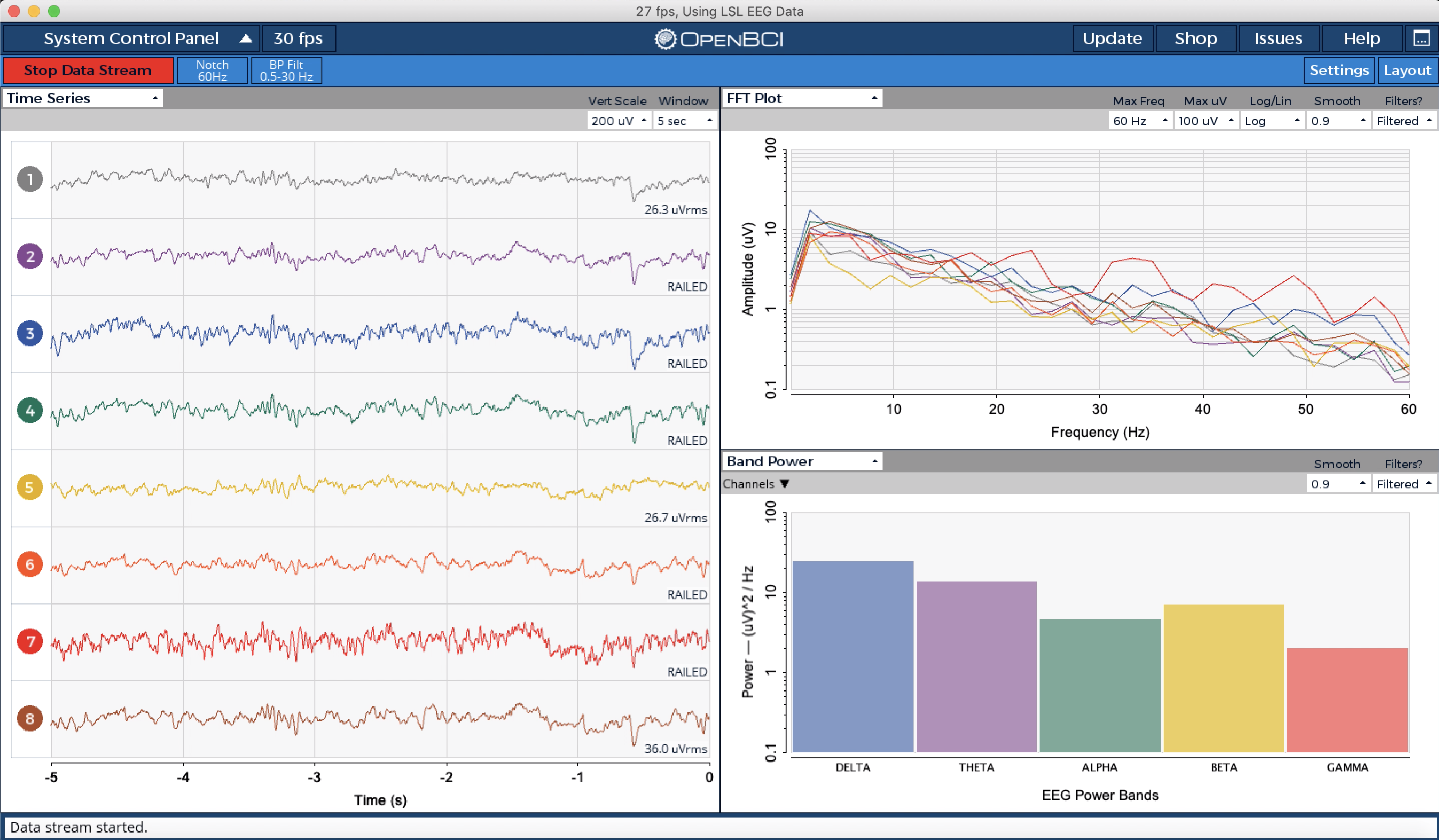Local Streaming¶
This part of the documentation is about streaming data from HackEEG to software running on the same computer, like a laptop.
Installing HackEEG on a Raspberry Pi 4¶
First, install HackEEG on your computer.
Connecting OpenBCI to HackEEG via Lab Streaming Layer¶
IMPORTANT! Ensure you are running on battery power. HackEEG has no mains isolation circuitry.
Start the
hackeeg_streamprogram:$ hackeeg_stream --sps 500 --continuous --lslYou should see the HackEEG blue board LED blink briefly to indicate proper operation.
Start OpenBCI as described in Installing OpenBCI
Select
Live (from Lab Streaming Layer)Select
8 channelsClick
Start SessionClick
Start Data StreamIn the lower right widget drop-down, select the Band Power widget
You should see something like this:
hackeeg_stream Usage Information¶
$ hackeeg_stream -h usage: hackeeg_stream.py [-h] [--debug] [--samples SAMPLES] [--continuous] [--sps SPS] [--gain GAIN] [--lsl] [--lsl-stream-name LSL_STREAM_NAME] [--messagepack] [--hex] [--quiet] serial_port positional arguments: serial_port serial port device path optional arguments: -h, --help show this help message and exit --debug, -d enable debugging output --samples SAMPLES, -S SAMPLES how many samples to capture --continuous, -C read data continuously (until <return> key is pressed) --sps SPS, -s SPS ADS1299 samples per second setting- must be one of [250, 500, 1024, 2048, 4096, 8192, 16384], default is 500 --gain GAIN, -g GAIN ADS1299 gain setting for all channels– must be one of [1, 2, 4, 6, 8, 12, 24], default is 1 --lsl, -L Send samples to an LSL stream instead of terminal --lsl-stream-name LSL_STREAM_NAME, -N LSL_STREAM_NAME Name of LSL stream to create --messagepack, -M MessagePack mode– use MessagePack format to send sample data to the host, rather than JSON Lines --hex, -H hex mode– output sample data in hexidecimal format for debugging --quiet, -q quiet mode– do not print sample data (used for performance testing)
